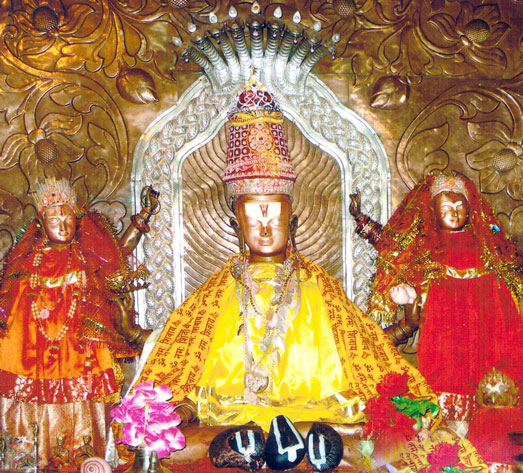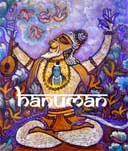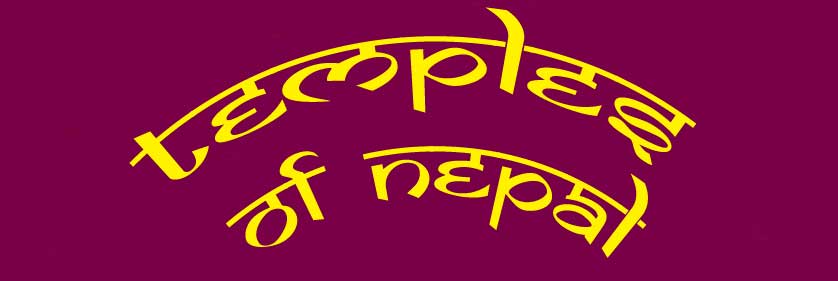 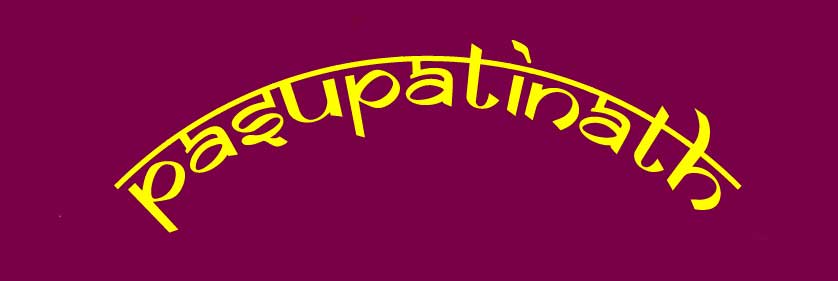 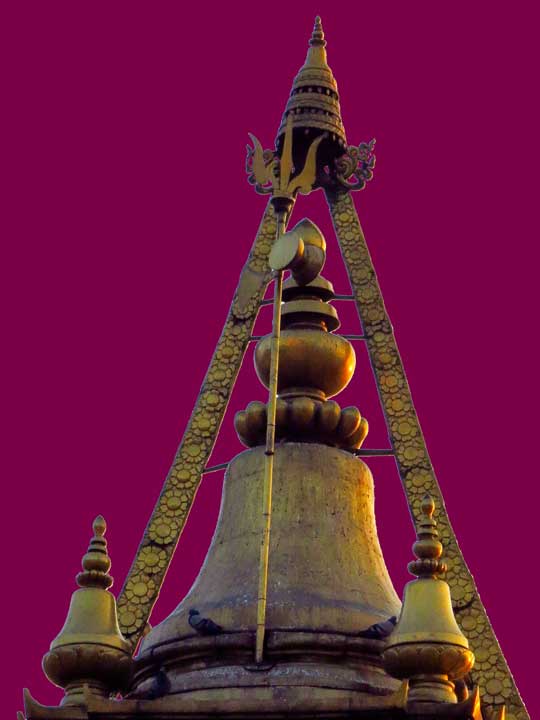 Pasupatinath I had been going to Badrinath for thirty years out of which 27 years were in succession but this year with the gigantic cloud burst in the Himalayas which all but destroyed the whole town of Kedarnath and most of the roads leading to Badrinath, I knew that the Lord had some other plan for me. At this time the question of a trip to Nepal came up. I had been to Pasupatinath a number of times but Muktinath had always eluded me and I felt that this was the appropriate time for this and the Lord had given the green signal to visit Him. So the program was made and a devoted party of seven people set out from Delhi to Khatmandu. October is supposed to be the best season in the Himalayas but this October was the exception which proved the rule and was wet and rainy from the very word “go”. Due to the inclement weather none of us wanted to go out on the evening that we landed even though Pasupatinath was very close to the hotel. Early next morning we left with our guide to the temple despite the constant drizzle. He was a man who had stayed for twelve years in Khatmandu so he knew everything to be known about the interesting stories attached to each of the little temples inside the Pasupatinath enclave and we would have been indeed lost if we did not have this expert with us. Lord Shiva is known by many different names and Pashupati is one. Pashu refers to all living beings and Pati means Lord. Thus Shiva is the master of all the living beings of the universe. This is the holiest shrine to Shiva in Nepal and he is the guardian deity of the country. The temple is situated on the right bank of the river Bagmati. 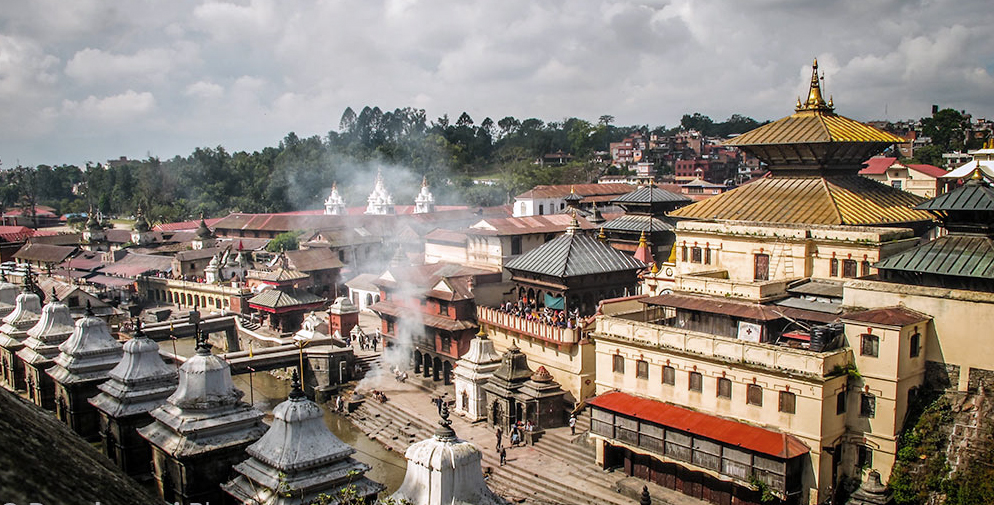 It is set in a huge compound which has many interesting features. As you enter the massive main gate you find yourself in a complex with many beautiful small temples each housing its own idol. The first thing that meets your gaze is the haunches of the massive brass Nandi who sits facing his Lord. He sits on a high pedestal which faces the Lord inside. Instead of going straight towards the Lord at whom Nandi was gazing with adoration, our guide insisted that we should go round the temple and visit all the minor deities who had taken their abode under the Lord’s shelter. It took us more than an hour to do the complete circumambulation of the temple which brought us back to the gigantic brass form of Nandi whose rump had met us when we first entered. There was also an enormous Hanuman to the right of Nandi to whom we offered worship. The idol of Pasupatinath- the Lord of all creatures is on a raised platform and cannot be seen from the ground. We had to climb up some stairs before having a glimpse of the Lord. He is the five-faced one with one head turned to each of the directions and the fifth head facing upwards. After having spent the best part of an hour seeing all the minor deities surrounding Him it was really sad that we had only a few minutes of darshana of the Lord since no one is allowed to stand before Him for a long time. But there was another platform just behind the main one right in front of Him and there we could stand for a longer time and gaze at Him for as long as we liked or as long as other eager devotees did not come up and push us off. At this point it was time for us to go to the airport to catch our flight to Pokra and then to Jomson on our way to Muktinath. 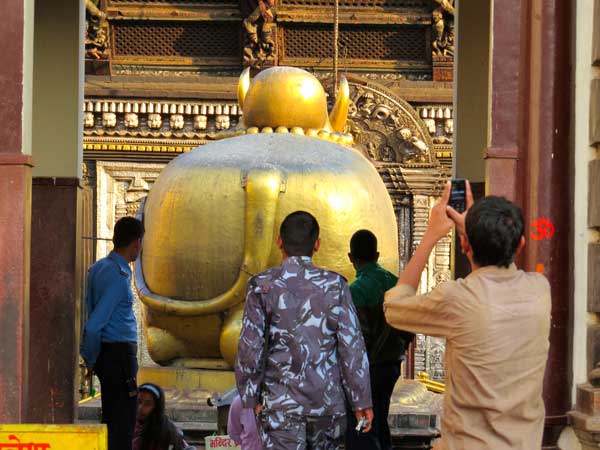 However on our return we went back to the temple at the evening arati which is one of the most beautiful in any temple. This time I noticed a lot of people going into the temple through the back door. I was most intrigued and of course joined the throng and was pleasantly surprised to find that there was a narrow corridor going round the sanctum which enabled us to stand right in front of each of the heads of the Lord. We went round and prayed before all the four heads from all four sides. The waving of lights was going on all this time so it was quite magical, running from door to door to see a repetition of the arati. I went from face to face and had a commanding view of the different types of arati which were being offered. It was only then that I felt satisfied and felt that my pilgrimage had been fulfilled. 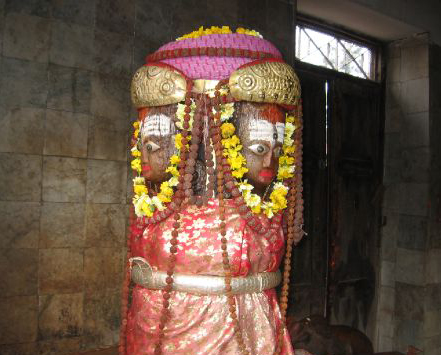 At this time I also found time to examine the actual structure of the temple. The linga was about three feet high and had four faces. Later I found that all the faces have different names and significance. The face facing east is known as Tatpurusha and the one facing south is Aghora. The faces looking west and north are called Sadhyojata and Vamadeva respectively. The upper portion of the linga is known as Ishan. These faces are symbolic of the four Vedas. If you look closely you can find the images of Vishnu, Surya, Devi and Ganesha inside the sanctum.  From the outside I noticed that the temple stands in the middle of an open courtyard. It is a square shaped pagoda temple built on single platform which is apparently 23.6 meters from the ground so you have to climb a considerable number of steps before coming face to face with the lingam. There are gold gilt doors on all the four sides of the temple. The doors are flanked by niches of different sizes with beautifully sculptured figures of apsaras, Shiva’s form as Bhairava and other gods and goddesses. The latticed windows are typical of Nepalese architecture. The image of the Purna Kalasha is a symbol of the goddess Guhyeshwari. The present architectural nature of Pasupatinath temple came into existence as a result of renovation by Queen Gangadevi during the reign of Shivasimha Malla (1578-1620 ) There are several stories involving the origins of Pasupatinath. One story says that Shiva and Parvati came to the Kathmandu Valley and rested by the Bagmati River. Shiva was so impressed by the beauty of the river and the surrounding forest that he and Parvati changed themselves into deer and sported in the forest. Many spots in the Kathmandu Valley are identified as places where Shiva went during his time as a deer. After awhile the gods began to search for Shiva. Finally they found him in the forest, but he refused to leave. The gods grabbed him by the horn and forced him to assume his own form. Ultimately Shiva announced that, since he had lived by the Bagmati in a deer's form, he would now be known as Pashupatinath, Lord of all Animals. It is said that whoever went there and beheld the lingam would not be reborn as an animal.  Bagmati Aarti This broken horn was worshipped as a lingam but with the passage of time it became covered with earth and grass. A cow used to go there every day and spray her milk over the mound which covered the linga. When it returned to its shed in the evening, she had no more milk to give. The owner was puzzled and followed the cow and came across this strange phenomenon of the cow shedding its milk over the mound. Curious to know the reason for this he dug the ground and found the jyotirlinga. After this many people started to come and soon the place became famous as a centre of pilgrimage. Brahmin priests from Karnataka known as Bhatts are the ones who do puja at the temple. This is the tradition started by Adi Shankaracharya who sought to unify the different states of India by encouraging a cultural exchange. The unique feature of this temple is that only 4 priests are allowed to touch the deity and these happen to be the Namboothiri Brahmins from Kerala. The Travancore Maharaja selected the priest and sent him and the Malla kings honoured this custom. However this tradition was broken after the historic political revolution in Nepal which demolished the monarchy and established a secular republic. The newly formed government allowed Nepali priests to perform the pujas, thus discontinuing the centuries-old tradition. Despite widespread protests this is being continued and when we went there we were told that the head priest who had been officiating for the past twenty-one years had given in his resignation. The temple dates back to 400 A.D. It is one of the 275 Paada Petra Sthalams (Holy Abodes of Shiva) on the sub- continent. In the past only Hindus were allowed to enter the temple. Others could look at it from the other side of the river. However, the norms have been relaxed due to many incidents. If the individual is destined, he/she will be able to complete the journey to the temple without any resistance or obstructions along the way and this is solely due to the grace of Shiva. The “pasu” or creature becomes the “pati” or Master. 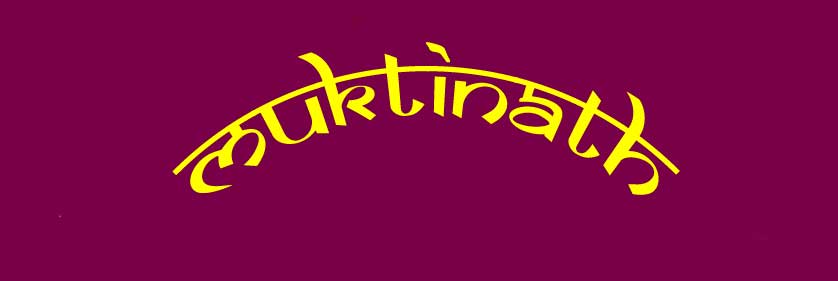 Muktinath was really an incredible and indescribable experience. As mentioned in the previous article we left the Pasupatinath temple and dashed to the airport all eager for the great treat where we would be transported to the famous town of Pokhra in just about twenty minutes. We were supposed to stay the night at Pokhra and fly the next day to the small town of Jomsom. From there we would have to take a jeep to the base camp called Kadbheni which was the confluence of the Kali/Gantaki River which is a famous river in which the best saligramas are found. A saligrama is a fossil coming from pre-historic times which is considered to be a form of Vishnu just as the black stone called a lingam is thought of as a form of Shiva. The saligrama is also a black stone found only in the Kali Gantaki River. If you break open a saligrama you will usually find some accoutrement or form of Vishnu inside it. Muktinath literally means “Lord of Salvation”. The temple is located in the Muktinath Valley at an altitude of 3,710 meters (higher than Badrinath) at the foot of the Thorong La mountain pass in the Mustang district of Nepal. Mustang lies on the famous Annapurana circuit trekking route. It is close to the village of Ranipauwa, which is sometimes mistakenly referred to as Muktinath. It is about 110 Km from Pokhara and 20 kms northeast of Jomsom. Muktinath is a most sacred place both for Hindus and Buddhists The Hindus call it Mukti Kshetra, or the place where one will get liberation or mukti. (After the arduous journey which we had undertaken, I could well believe this!) There are one hundred and eight “divya kshetras” or famous temples to Vishnu in India and Muktinath is considered to be the 105th among these. In former times the place was known as Thiru Saligramam. This is because this is the place where all saligramas come from. I was surprised to find that it is also famous for being one of the fifty one Shakti peethams or seats of the divine mother. The Buddhists consider this to be one of the twenty four Tantric sites in which the dakinis or celestial dancers have their abode. They consider the idol to be a manifestation of the Avalokiteswara or incarnation of Buddha. Even though I had most of this information yet it had not prepared me for the reality which totally overwhelmed me. To go back to the journey. The airport was a scene of bustling activity. It looked more like a railway station than an airport. Luggage was strewed all over the floor and indecipherable announcements were being made constantly. We checked in our luggage and went to the room to wait for the take-off. After staying for a few hours we realised that the probability of us getting a flight that day was less than five percent. One by one all the flights were being cancelled. Then we were given the comforting news that Pokhra airport had declared that no plane could land in it! In a way it was a relief to have some positive news. However since our flight had not been officially cancelled we hung around till 2 pm and then decided to call it a day. We departed to another hotel and arranged for a van to take all seven of us to Pokhra the very next day. Early next morning we were all packed and ready for the treat!! The road was not that good but still it was bearable and we reached Pokhra by about 5 pm. An irritating drizzle accompanied us the whole time. On enquiry we found that the Pokhra/Jomsom flight had also been cancelled for the next three days. This left us with no option but to take a jeep type of van which could carry all seven of us and our luggage, which of course would have to be drastically reduced since the space was so limited. The drive was supposed to take only five hours but the fact is that it took ten hours! What can I say about that nightmarish drive? There were no roads at all- only river beds filled with huge boulders and stones. This so- called road was so narrow that even two small cars could not pass each other. To make the whole thing more interesting there was a huge mountain on one side and a sheer drop to the river on the other. Many times we were stopped by buses which had collapsed on the road with broken axles and burst tyres! The three people sitting at the back were really tortured since they could not even stretch their legs and had to sit with their knees touching their chins! It was indeed a terrifying journey but we kept up our spirits by chanting mantras and cracking jokes and laughing hysterically if not joyfully. Every time we asked the driver how much longer it would take he would happily say another two hours. The two hours dragged on without respite and it was dark and cold when we stumbled into Jomsom which is really a one horse town or perhaps a one donkey town. The driver advised us to stay on there and go to Kadbheni the next day but just then our guide who had been waiting for us at Kadbheni called to tell us to press on and come to Kadbheni immediately since everything had been arranged for us for the night. Everyone voted for this so all of us tumbled out of the van and taking our luggage we stumbled across the bridge over the Kali Ghantaki River and found the jeep waiting for us. Another crazy drive across the river beds with no lights and total trust in the Lord who must have been guiding the driver all the time. When we arrived at the guest house ( in the little village of Kadbheni) we were pleasantly surprised to find that we had clean, neat rooms with attached baths which even had hot water. This was indeed a bonus which we had not expected but no doubt Vanamali had decided that we needed a boost after all the tortures we had undergone the whole day. Actually the guest house catered to all the various westerners who had to stop there on their trek around the famous Annapurna peak. Hence the comparatively decent rooms. A hot meal had also been prepared for us by our dear guide and when we retired to our beds we were each given a huge Chinese flash looking like some deadly weapon, filled with hot water. I was never very sure what we were supposed to use it for. However it was very comforting to have some hot water on hand. The next morning I was up at three to finish my bath and puja before leaving at 6 am. The jeep arrived and we were off on our last lap. The jeep took us to a spot which was three kilometres away from the temple. It was a great relief to get out of the jeep and start our trek through the most glorious scenery we had passed so far. The Nilagiri and Dhoulagiri ranges were so close to us that we felt we could just skip across and touch them. The Kali Gantaki was gurgling beside us all the time. In fact her source is from Muktinath. It was strange to find that the village at the bottom of the temple was quite modern thanks to the Tibetan refugees who had built quite a few hotels and restaurants catering to all the western trekkers who had to pass this place on their Annapurna circumambulation. Of course the Tibetans were all Buddhists and I was surprised to see many Buddhist gompas jostling with the temples of the Hindus. A bigger surprise awaited us at the Muktinath temple where we found that there were no Hindu priests at all but only a Tibetan nun who kept cleaning the offerings which were being offered at the feet of the idol by the Hindu devotees! 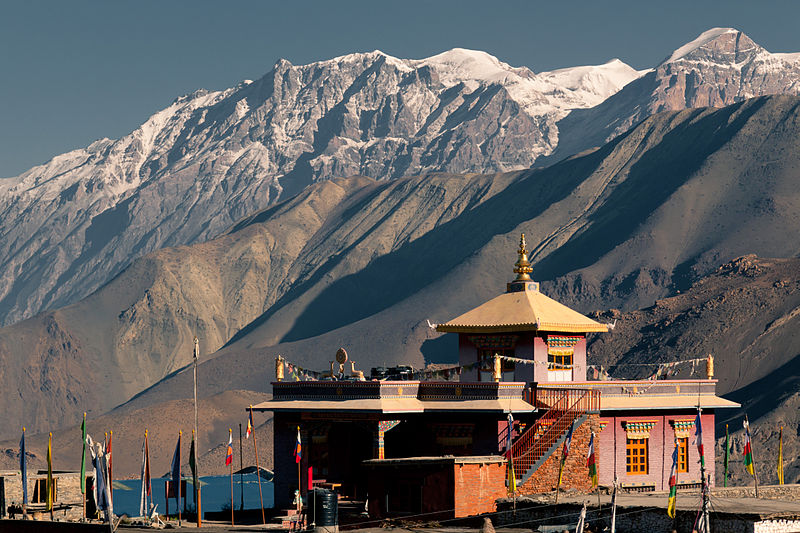 The climb from the village to the temple passed through some breath-taking scenery. I am very prone to altitude sickness but the fact is that I didn’t even realise that we had climbed to a height which was more than Badrinath. The fact that we were trekking of course helped me to get adjusted to the altitude in a natural way. The path was rather rough but there were so many flowers scattered here and there and the ranges were so close that I had no time even to think of sickness and was propelled forward on waves of delight. At the end of the trek we had to pass through a grove of trees which brought us suddenly before the typical pagoda style temple of Muktinath. Just in front of temple were two icy kunds or ponds in which some hardy pilgrims were dipping. Muktinath is not only the 105th of the divyadesams of the Vaishnavites but it is also included in the eight most sacred shrines to Vishnu known as Swayam Vyakta Kshetras. The other seven are Srirangam, Srimushnam, Tirupathi, Naimisharanya, Totadri, Pushkar and Badrinath. It is one of the most ancient temples of Vishnu. The temple itself is very small but before going into it one has to do the prakaram or circumambulation. On the wall surrounding the path there were 108 faces of bulls through which freezing water gushed forth. This water is supposed to come from all the temple tanks of all the 108 divya desams, like Srirangam, Tirupati and even the celestial Vaikunta or abode of Vishnu. I splashed the water of all the spouts on myself even though it was freezing cold. Some hardy devotees even take baths in these waters.
After going round I entered the inner courtyard and beheld the idol of the Lord. It was indeed huge and most impressive. Usually there are a lot of barricades which part you from the main sanctum but here there was nothing but a door that separated me from the murti (idol). There were no Brahmin priests inside – just a Buddhist nun who kept cleaning the flowers and other articles which people offered from outside. Suddenly I had a happy thought. I asked her if I could go in and sit for a while and she nodded so I was able to sit right inside in one corner where no one noticed me and repeat the whole of the Vishnu Sahasranamam which is one of the most important hymns to Vishnu. This was indeed a miracle. I was so grateful to Vanamali for having arranged this for me.  Ten Incarnations of Vishnu Outside Buddhist ghee lamps and other paraphernalia was all over the place since apparently the Buddhists also regard the Lord as Vishnu himself. Their tradition goes that the great guru Padmasambhava, the founder of Tibetan Buddhism meditated here on his way to Tibet. This is the only place where the Lord is said to be manifest in all the five elements or maha bhutas- space, air, water, earth and fire. The last one was not to be seen here but outside a little farther away in the form of the Jwala Devi temple which has fire coming out from the cracks in the boulders. This is also said to be a Shakti peetham where Sati’s temple is said to have fallen. Thus it is a famous place for worshippers of the divine mother. There are fifty-one Shakti peethams in India corresponding to the fifty-one letters of the Sanskrit alphabet. Each of these peethams has a shrine to the goddess and one to Bhairava. At every place she is known by a different name. Here she is known as Gantaki Chandi and Bhairava as Chakrapani. Our guide did not allow us to stay too long since we had to get back to Pokhra the same day. The weather was also slowly changing and it was getting colder. Though I felt sad to leave yet I knew that staying longer would have been dangerous since we might not be able to make it back to Pokhra before nightfall. We had a Tibetan breakfast at the village with momos and barley porridge which was quite good. When we returned to Khadbeni we found that our jeep driver was still doing repairs to the jeep and when we finally set out it was 2 pm! Needless to say the return journey was equally horrendous and we reached Pokhra only at midnight. Early next morning we went to the bustling airport and after quite a lot of haggling and bargaining we managed to get flights back to Khatmandu even though the party had to split up into groups. It was only after returning to civilization that I realised what a miracle our journey had been. It was incredible that despite the enormous obstacles in our path we had managed to reach this place to which very few devotees ever come. The greatest miracle of all was the fact that I, who had a very bad back, had not even felt a twinge of pain despite the two frightful journeys we had. The rest of the party also found that they were quite bright and alert the next morning. None of them had ever undergone such experiences before but none of them had even small aches and pains. My heart was filled with gratitude for the great blessing that Vanamali had bestowed on me. I knew I would never have such an experience again. The main party went off to Delhi the very same day while three of us stayed on and saw the whole of Khatmandu and all the ancient temples there. Hari Aum Tat Sat 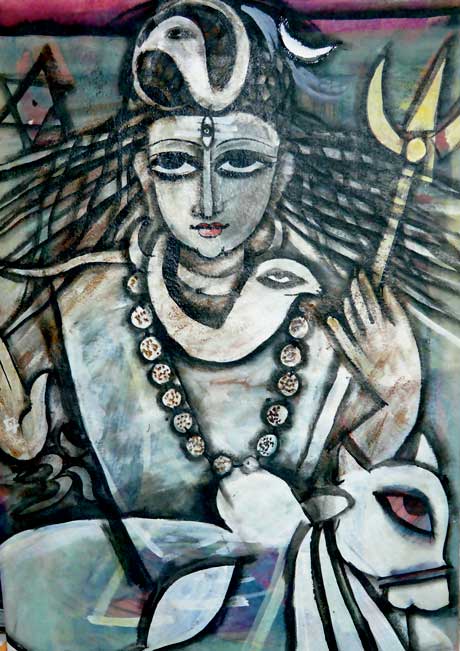 . .
|
